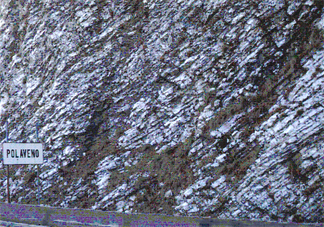
Geotimes Home | AGI Home | Information Services | Geoscience Education | Public Policy | Programs | Publications | Careers

 During the mid-Cretaceous,
several periods of severe oxygen depletion in the ocean, each lasting millions
of years, caused massive die-offs of microscopic marine organisms. Using microfossils,
a research team has dated the earliest of these episodes, called ocean anoxic
events, to 132 million years ago.
During the mid-Cretaceous,
several periods of severe oxygen depletion in the ocean, each lasting millions
of years, caused massive die-offs of microscopic marine organisms. Using microfossils,
a research team has dated the earliest of these episodes, called ocean anoxic
events, to 132 million years ago. Sara Pratt
Geotimes contributing writer
Back to top
 |
Geotimes Home | AGI Home | Information Services | Geoscience Education | Public Policy | Programs | Publications | Careers |